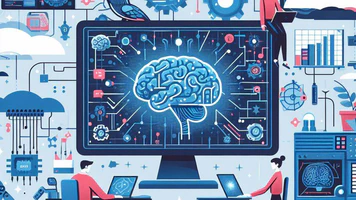
- By Justin Riddiough
- December 8, 2023
Pattern Recognition Tasks
Neuromorphic computing emerges as a powerhouse in addressing intricate pattern recognition tasks, showcasing a level of sophistication that goes beyond traditional computing paradigms.
The adaptability and parallel processing capabilities of neuromorphic systems make them particularly adept at discerning and interpreting complex patterns.
Explore Applications
Neuromorphic computing finds application in various domains where pattern recognition is paramount:
-
Image and Speech Recognition: Neuromorphic systems excel in recognizing patterns in images and speech, enabling more accurate and context-aware interpretations.
-
Biometric Authentication: The ability to recognize unique patterns in biometric data, such as fingerprints or facial features, positions neuromorphic computing as a reliable solution for secure authentication.
Neuromorphic Sensors in Robotics, Autonomous Vehicles, and IoT
The integration of neuromorphic sensors heralds a new era in robotics, autonomous vehicles, and the Internet of Things (IoT), introducing intelligence that mirrors the sensory acuity of living organisms.
Neuromorphic sensors elevate the capabilities of machines, enabling them to perceive and interact with their environments in a more nuanced manner.
Discuss Applications
Neuromorphic sensors play a pivotal role in transforming various industries:
-
Robotics: In robotics, neuromorphic sensors enhance perception, allowing robots to navigate dynamic environments with greater precision and adaptability.
-
Autonomous Vehicles: Neuromorphic sensors contribute to the development of safer and more responsive autonomous vehicles by mimicking human-like visual and auditory processing.
-
IoT Devices: The application of neuromorphic computing in IoT devices enhances their ability to interpret and respond to sensory data, opening avenues for more intelligent and context-aware functionalities.
Advantages in Real-time Processing Scenarios
Neuromorphic computing shines in real-time processing scenarios, offering advantages that are particularly crucial in dynamic and time-sensitive environments.
The event-driven nature of neuromorphic systems aligns seamlessly with the demands of real-time processing, enabling swift and contextually aware decision-making.
Highlight Advantages
Neuromorphic computing demonstrates notable advantages in real-time processing:
-
Low Latency Decision-making: The event-driven architecture ensures low-latency decision-making, a critical factor in applications such as cybersecurity, financial trading, and emergency response systems.
-
Adaptive Learning in Real-time: Neuromorphic systems can adapt and learn in real-time, allowing them to evolve their responses based on changing circumstances—a feature invaluable in dynamic environments.
In conclusion, the exploration of applications in pattern recognition, sensors, and real-time processing unveils the transformative impact of neuromorphic computing. As we leverage these capabilities, we pave the way for intelligent systems that not only recognize patterns but also dynamically respond to the complexities of the world around them.


